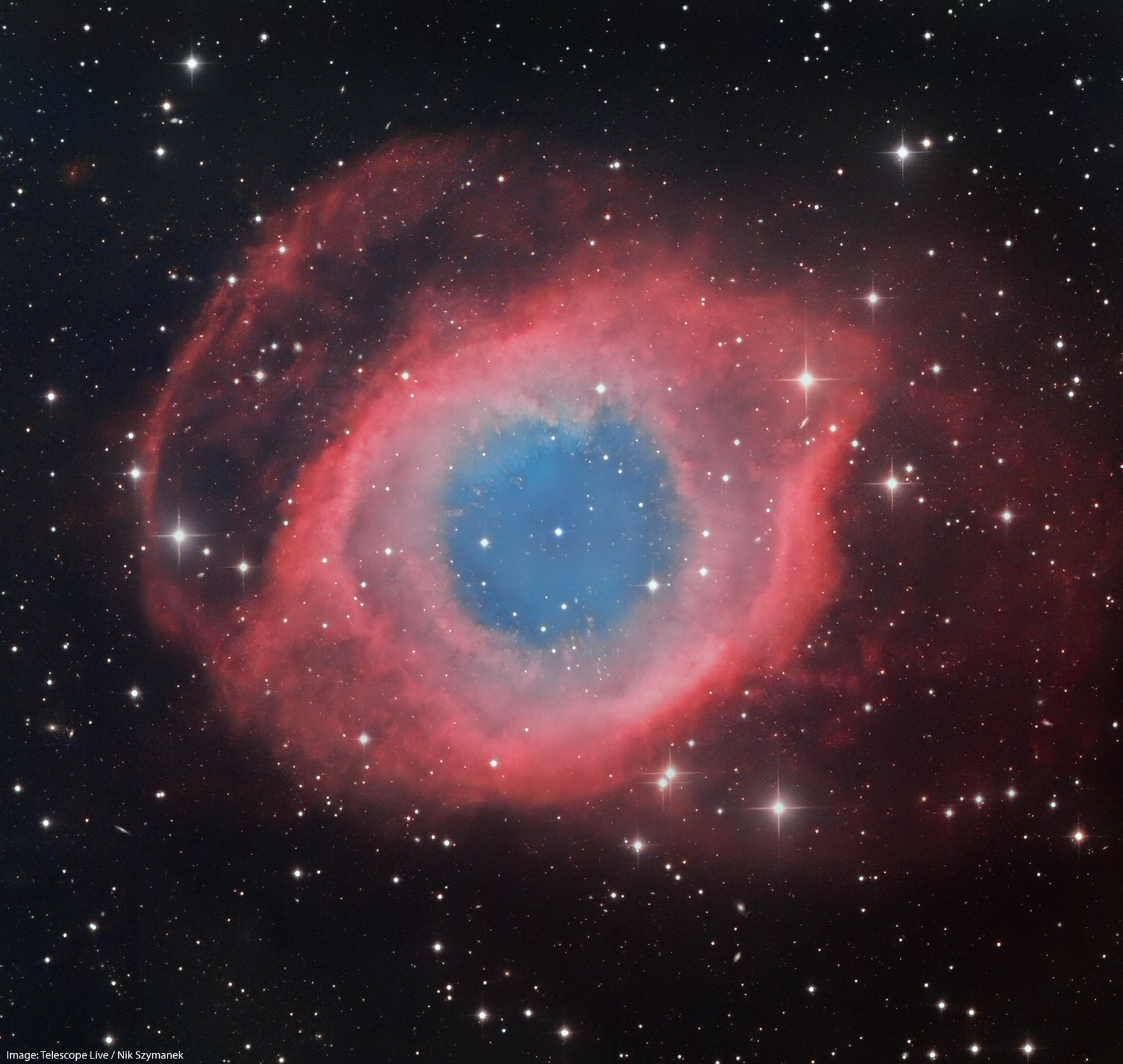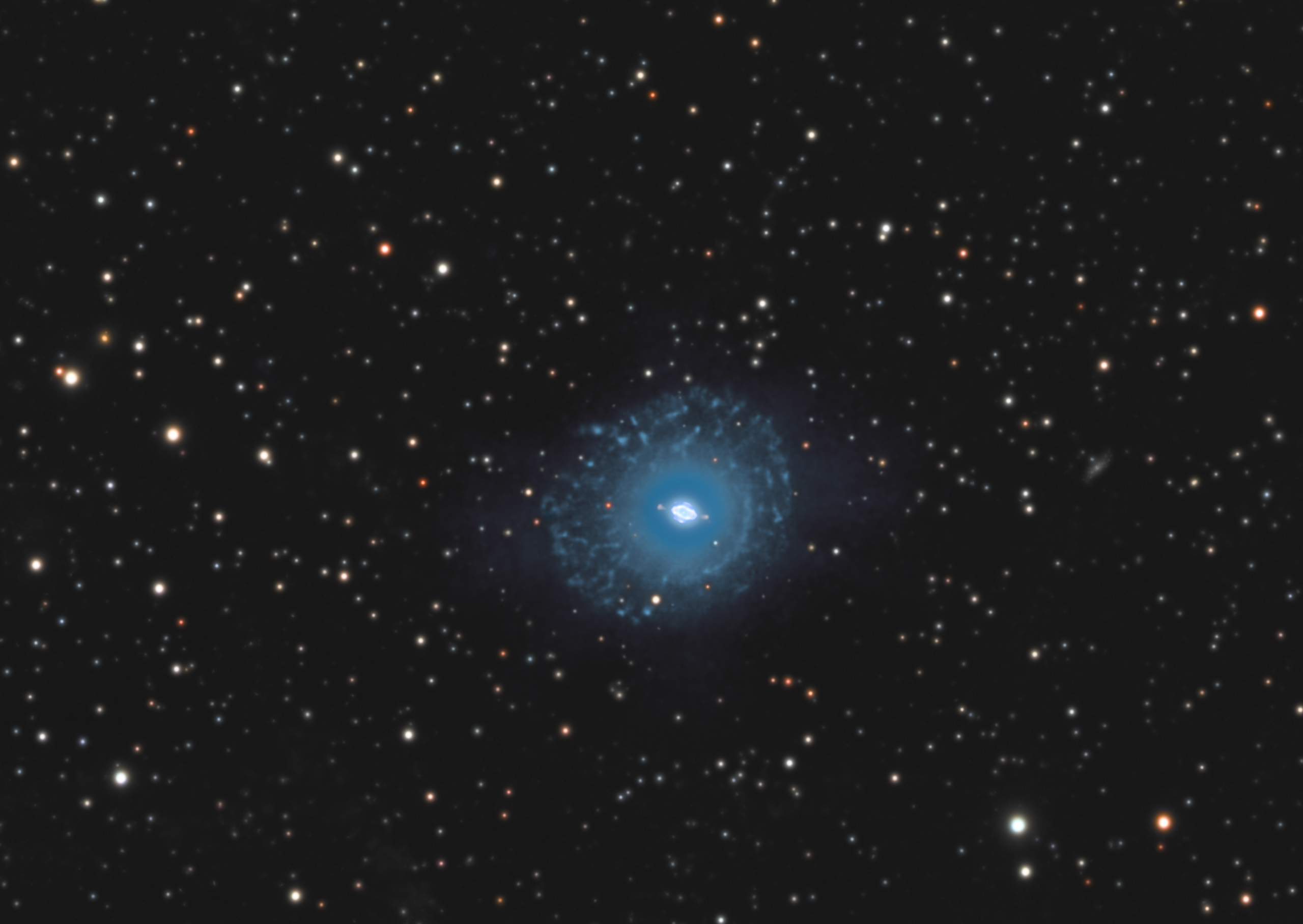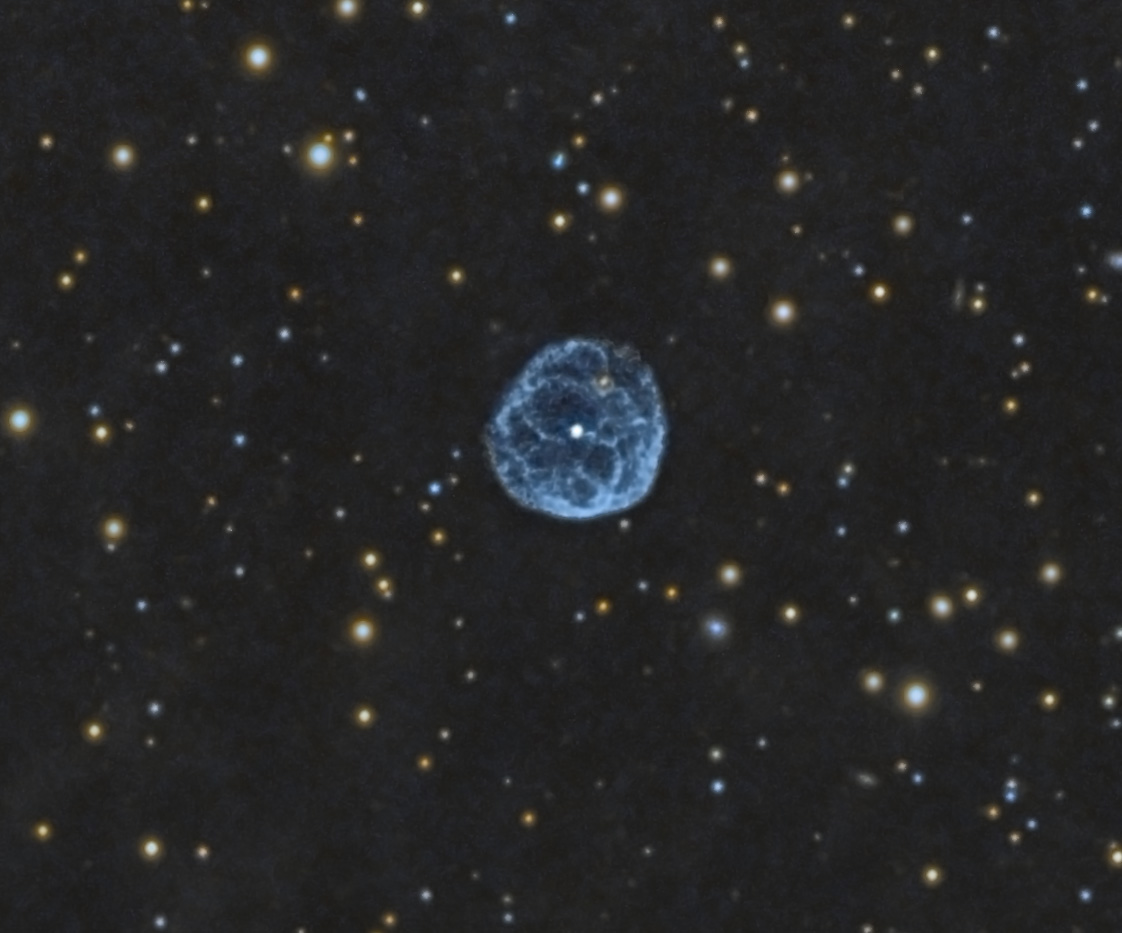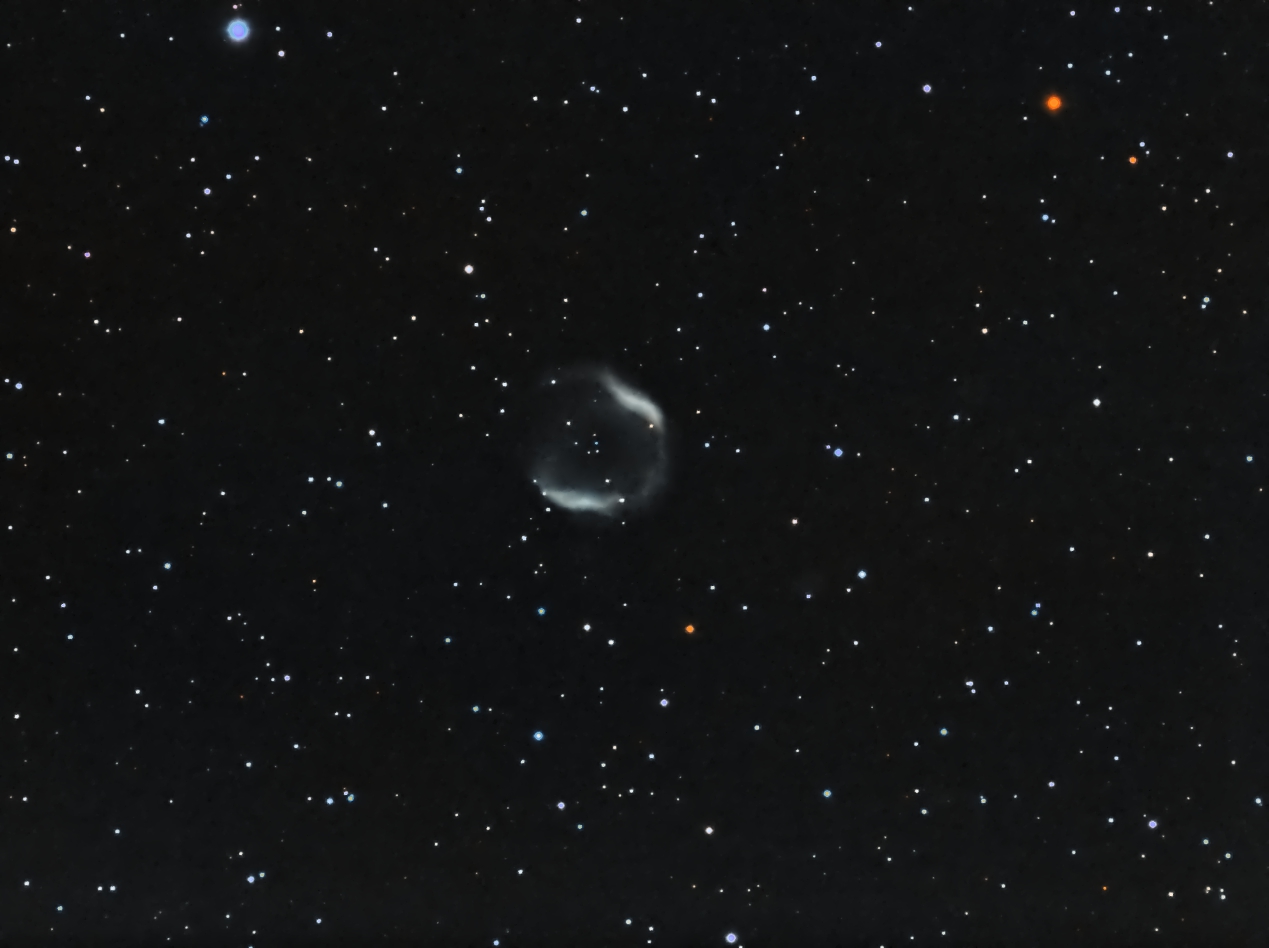An autumn tour of planetary nebulae
2022 October 6
In this article I look at a range of planetary nebulae visible in the autumn skies. The objects chosen go from south to north and from easy to hard. Many of these Deep Sky Section articles in the Observers’ Forum look at observing planetary nebulae, in part because the steady deterioration in UK skies, at least for visual observers, means that it is getting more difficult to look at extended sources such as galaxies. The use of nebula filters does seem to help at the moment, but the introduction of broadband LED light sources may negate even them in the future. Despite the best efforts of the Commission for Dark Skies, the sky brightness keeps increasing. Increasing pollution has meant that the transparency of our skies is going down as well, and we can no longer compete with other countries in terms of dark skies.
The increasing number of dark-sky areas sanctioned by the International Dark-Sky Association in the UK is also a misnomer. In countries like the UK where you are never far from the light domes of towns, the use of sky measurements pointing vertically, where astronomers never look, means these sites really only appear to reflect a dark sky if you come from the centre of a town. For serious visual deep-sky observing they are in general not that good, in particular if you are looking at low-down objects.
My first target is the Helix Nebula, NGC 7293, in Aquarius. One of the largest (about half the size of the full Moon) and nearest planetary nebulae, it unfortunately never rises that high as seen from the UK. My first views of it, using 11×80 binoculars from Zimbabwe, showed it as a very bright, large, and circular patch. Recent observations on a very transparent night using my 55cm telescope and a 17mm Ethos eyepiece, from North Devon, showed it to look not dissimilar to images, although the telescope was pointing practically horizontally. The large size of the Helix suggests that a telescope with a wide field and low power are best when trying to observe it.

Moving a little further north, but staying in Aquarius, we come to the bright and easy planetary nebula NGC 7009, popularly known as the Saturn Nebula. This moniker was given to it by Lord Rosse, although the nebula itself was discovered by William Herschel as one of his first fuzzy objects. In a small telescope, the nebula usually shows an oval shape, and it is often called ‘bright green’. Like many of the smaller planetary nebulae, it takes power well. My best view was obtained using Andrew Robertson’s 60cm telescope, on a steady but not transparent night at the Haw Wood star party. When using 700× magnification on a driven platform, we were able to see the ansae and FLIERs (fast low-ionisation emission regions) better than I have ever seen before, and probably will ever see again. Although Dobsonians are usually regarded as deep-sky telescopes, having them driven really helps with this kind of work.

Moving yet further north into Pegasus, to the vicinity of the cluster M15, we come across the planetary nebula NGC 7094. Discovered by Lewis Swift in 1884 using a 16-inch refractor, he described it as eeF. My own observations with the 55cm and an OIII filter suggests that if the transparency of the night is poor then it is hard to find. Good skies show a faint circular patch, and on the best nights some annularity can be seen. Given this experience, when I see observations of it with small telescopes, I tend to question them. However, of course, the location of the observer has to be taken into account. If you are observing in the American Southwest at 7,000ft, then what you can see does not reflect what is visible from 200ft under the poorer skies of the UK.

Moving yet further north in Pegasus, we come to one of the more challenging planetary nebulae in Jones 1. Discovered by Rebecca Jones in 1941 from the Franklin–Adams plates, it is not to be confused with the planetary nebula in Lynx, Jones–Emberson 1. This is a large, faint planetary nebula that is best seen using a low-power eyepiece and an OIII filter. I have glimpsed it with 30cm of aperture from a good dark site in the UK, but even with 55cm, views again depend very much on the transparency of the skies. Normally you can see just the two brighter arcs, but on the best nights with the larger telescope, sometimes you can see the horseshoe shape. Jones 1 has proved very popular with imagers. Deep images also show what appears to be a FLIER to the south of the nebula in SII.

My next object is challenging for both visual observers and imagers. This is the planetary nebula Pease 1 in M15. Also known as Ku 648, it is one of only four planetary nebulae known to be associated with globular clusters. Pease 1 was discovered by Francis Pease in 1928 and is quite close to the centre of M15; you are going to require a steady night to use the high power necessary to find it, as well as a good finder chart. You will also need an OIII filter. I have only seen it once with a 50cm telescope, although on the same night it could also be seen by an experienced observer using a 45cm telescope. I have not looked for it again. There are claims that it can be seen with 30cm, but I doubt this.
My final challenge is a little-known planetary nebula in Andromeda: Vy 2-3. This is a very small planetary nebula that shows a smooth disc and an extended halo that might be visible to imagers. This one I have not yet gone after, but will require high power and steady skies to find. It may be best located using the filter blink technique, which involves moving the filter between eye and eyepiece and seeing which ‘star’ does not change in brightness. Allegedly it can be seen from altitude with a 20cm telescope as a star-like point, and responds to both OIII and UHC-type filters.
Hopefully the above will give you some challenges to look for in the autumn skies, on the clear nights that we rarely seem to get.
| The British Astronomical Association supports amateur astronomers around the UK and the rest of the world. Find out more about the BAA or join us. |
